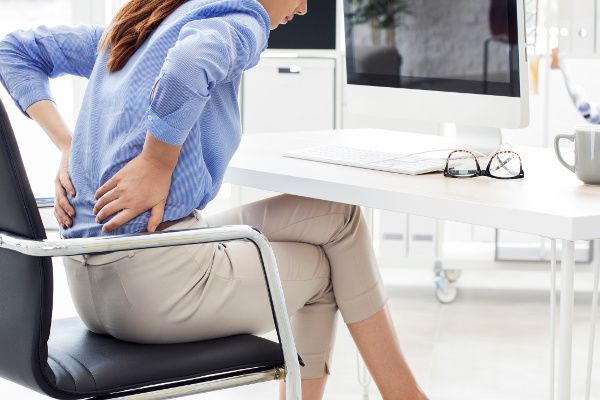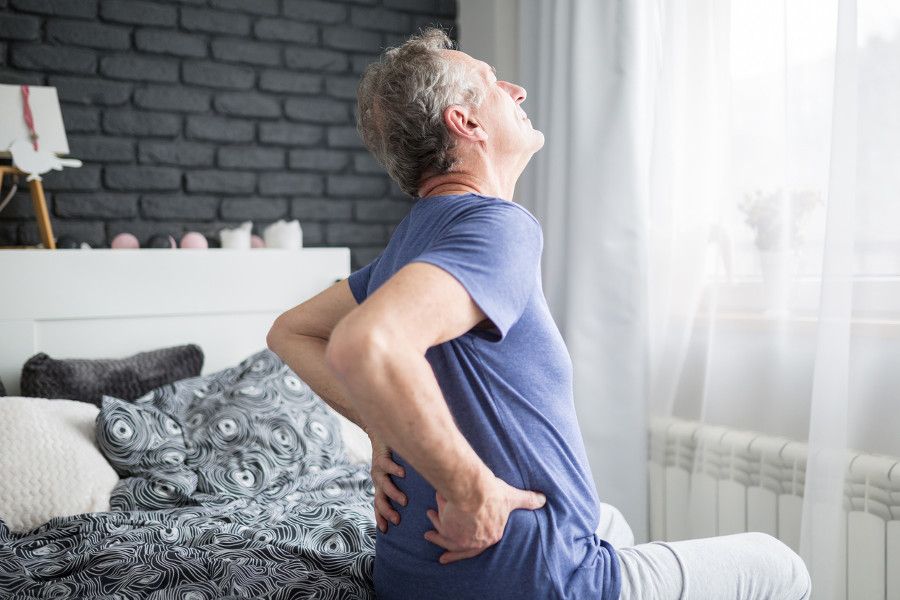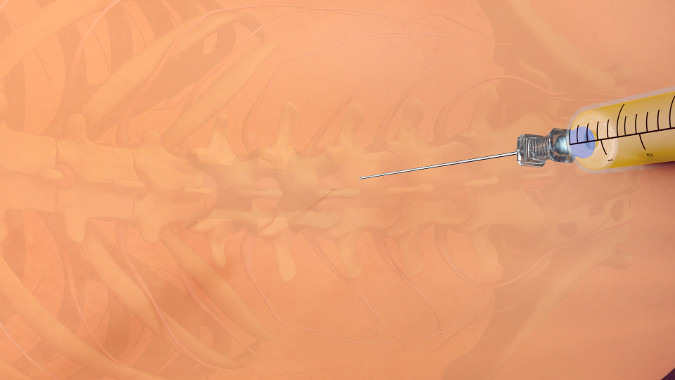Learn Dr. Anthony Galante’s Thoughts on What the Media Says About Treating Low Back Pain
Recently, I came across an article on low back pain in the Lifestyle section of AOL. It was titled, “10 secret reasons for your back pain” by Reader’s Digest author Alyssa Jung.
I read this article with curiosity to see how the media’s message compared to the truth about back pain. After all, articles like this have the potential to affect the thought processes of millions of people.
The fact is 80% of people will have disabling low back pain at some point in their lives. And roughly 33% of all adults are currently suffering from low back pain. Furthermore, with the current opioid crisis, low back pain is a hot topic, and the media knows this.
So, let’s take a look at this article and see if its take on low back pain lines up with reality.
Analyzing the Article
First, we should consider the title of the article: “10 secret reasons for your back pain.” The media will use phrases like “secret,” “shocking,” or “little known” to draw interest. After all, if it is a secret, then I don’t know about it. So, the only way to uncover the mystery is to read the article.
Be aware that headlines like this one were written to grab your attention. Often, when you read the actual article, you find there are not any secrets or anything shocking, just a clever writer.
Now, let’s discuss these 10 “secrets.”
Secret #1: Stress Leads to Back Pain
To begin her article, Jung quotes a chiropractor, who asserts that prolonged stress can lead to a backache. Jung then recommends relaxation techniques to combat the problem.
Not exactly a secret is it? We have known for decades that stress can have physiological effects on our body.
Hans Selye, known as “the father of stress research,” published his paper on stress in 1936. In it, he reported that stress was the cause of death in his experimental rats. However, the article initially attracted no attention. By 1950, Selye was famous in his field, but his discoveries had yet to trickle down to patients.
Today, thanks to Hans Selye, we have known for decades about the stress response. Stress is so ingrained in our culture now that doctors will use it as a “wastebasket diagnosis,” meaning if doctors don’t know what is wrong, they will tell the patient it is stress (or their age).
Stress can make low back pain, disc herniations, stenosis, sciatica, and arthritis worse. However, the adverse effects of stress on the back can be decreased or eliminated with chiropractic care. At Algonquin Chiropractic, we treat stress daily.

Secret #2: High Heels Can Be a Problem
For her second point, Jung turns to lady’s footwear. She quotes a certified personal trainer named William Suggs, who claims high heels throw off a person’s center of gravity and prohibit the calf muscle from fully extending. The trainer also recommends a change in footwear to protect your back.
Agreed, but a secret?
A 2016 study found that standing in high heels is associated with increased knee and ankle flexion; however, other curves in the spine were not significantly affected. Individuals with less-than-average knee flexion, however, responded to high heels by an additional increase in cervical lordosis. This heightened curvature of the spine was what resulted in increased neck and low back pain for those people.
At Algonquin Chiropractic, we frequently treat this problem with custom orthotics. By wearing these corrective inserts in their shoes, high heel-wearers can find relief from low back pain.
Secret #3: Bad Nutrition Leads to a Bad Back
To back her next secret, Jung cites a 2014 study from the Asian Spine Journal, which found a link between back pain and gastrointestinal problems. She points out that the connection between these problems is due to sugar and caffeine-rich diets and advocates instead for healthy, non-processed foods.
This may be a secret to most people.
We would not think to correlate what we eat with our pain, but there is a connection. That is one reason we at Algonquin Chiropractic have recommended our detox program–an anti-inflammatory diet and anti-inflammatory nutrition–for over 20 years. When people get on and stay on a proper diet, not only do they lose body fat, but they also sleep better, have more energy, fewer digestive problems, improved skin conditions, and more. The list goes on and on!
One of the diets we highly recommend is the DeFlame diet. It is a comprehensive program, dedicated to removing all inflammatory foods from a person’s diet for a better, pain-free lifestyle.
Secret #4: Tight Pants are Unhealthy
For this one, Jung takes the word of Dr. Kenneth Hansraj, chief of spinal surgery, who claims skinny jeans and pencil shirts hurt your back by restricting your range of motion. She then prescribes clothes with stretchier fabric to prevent this problem.
It’s an interesting take but not exactly accurate.
Tight clothing may make a good read in a “secrets of low back pain” article, but in reality, it’s probably not a significant cause of back pain. Actually, in over 26 years of practice, I don’t think I have ever witnessed this problem.
However, while researching on PubMed, I came across a study on this very issue. Among other findings, the study found, “Discomfort ratings were significantly higher for tight pants than fit.” The increased discomfort may be due to the decreased lumbar range of motion with tight-fitting clothes. According to this study, patients doing jobs that require significant bending and lifting should consider looser fitting clothes.
Secret #5: Inactivity Hurts Your Back
Jung once again quotes Suggs, who cites inactivity as a terrible crime against your back. He claims that sitting still for long periods of time tightens your lower muscles and puts too much pressure on your back. The article points to stretching and making sure your back is supported while sitting as good ways to combat this issue.
Spot on with this recommendation!
Sitting has been called by some authors as “the new smoking.” Why?
An analysis of 13 studies of sitting time and activity levels found that those who sat for more than eight hours a day with no physical activity had a risk of death similar to the dangers of dying posed by obesity and smoking.
Prolonged sitting will undoubtedly tighten up muscles as mentioned above; however, when it comes to the lower back, the real problem is the pressure on the discs in the lumbar spine. Sitting seems like an innocent activity; and you can read in more detail in my book, The Sciatic Survival Guide, how research shows sitting increases the pressure on the lower discs in the lumbar spine. Any person who has had a disc herniation knows it can be painful to sit.
What can we do?
Edward R. Laskowski, M.D. of Mayo Clinic has a few recommendations:
- If you sit for prolonged periods of time, then take a break and stand every thirty minutes.
- Do as many tasks as you can while standing, like talking on the phone or watching television.
- Try to work at a standing desk or a counter.
- Have meetings with coworkers while doing something active, like walking or jogging.
- If possible, do your work while walking on a treadmill so that you will be active all day.
I would encourage you to try any of these suggestions for a healthier, more pain-free lifestyle.

Secret #6: Smoking Kills Your Back Muscles
For her next secret, Jung turns to a widely known cause of many health problems: smoking. She cites a Northwestern University study, which found that smoking makes people less able to cope with back pain. She also mentions prior studies that found that smoking harms tissues in the lower back and prevents nutrients from getting to back muscles.
This is an obvious one, right?
We all know smoking is bad for you, in many ways. We have known for a long time that smoking decreases the circulation of the small blood vessels going to the disc and muscles, which makes you more prone to injury.
It’s easy to say; however, it’s not so easy to just quit smoking! If you are serious about stopping smoking, then get professional help.
Sedentary lifestyle, obesity, smoking, poor diet–everyone knows these lifestyle factors will negatively affect your health.
Secret #7: You Have Weak Abs
Once again, the author quotes Suggs, who claims that weak abs can wreak havoc on your back. He urges people to make sure they are exercising their erector spinae muscle throughout the day to keep their core in shape. To him, if you ever relax your midsection throughout the day, then you’re setting yourself up for a back injury.
My main problem with this section is I think Jung titled it wrong. She gave it the title “You’re skipping ab workouts,” which implies you need to strengthen your ab muscles to improve your lower back. However, studies show it is much more important to strengthen your low back muscles than your ab muscles for low back pain.
Mr. Suggs does suggest exercises for the erector spinae, which is a lower back muscle. Unfortunately, this message may get lost on some readers, since Jung chooses to focus on ab workouts in the title. The media is all about catching peoples attention, and “You’re skipping erector spinae workouts” just doesn’t have the appeal as the “ab workouts” does. This subtle type of deception is why you should be careful when reading these articles.
Secret #8: Your Hips are Uneven
Jung then discusses how an imbalance in your hip bones can cause you significant back pain. Suggs suggests that uneven hip bones can become especially apparent during workouts because you’ll notice muscle tightness and back pain while exercising. He recommends seeing a doctor immediately to evaluate these issues accurately.
This one is such a secret I am surprised it is even listed here.
One study suggested a 5 mm difference in the height of your pelvis makes you more prone to low back pain. Moreover, a 10 mm difference makes you more prone to low back pain and spinal degeneration (arthritis).
Few doctors ever look at this.
This problem is something we have been looking at for over 20 years. If your pelvis is unlevel, then it may be due to poor foot alignment. And if you have poor foot alignment and an unlevel pelvis, then you may have leg length inequality (one leg is longer than the other).
These are all factors in low back pain that need to be addressed. We address these bio-mechanical problems with Cox Technic, manipulation, massage therapy, rehab, and orthotics.

Secret #9: You’re Not Drinking Enough Fluid
The article then covers the topic of hydration. Jung claims that the “jelly-like substance” between your spinal discs is 90% water. Therefore, when you don’t drink enough water, it reduces the padding between discs and causes discomfort. She then recommends monitoring the color of your urine to make sure you’re drinking enough water.
I’m not so sure about this one.
In my two and a half decades as a chiropractor, I have never had a patient come in and say, “Hey doc, I drank a bunch of water, and my back is feeling a lot better.”
Hydration is the darling of the media and multi-level marketing companies. They love to preach hydration and drinking clean, pure water.
This is not to say staying hydrated is a bad idea. It is part of a healthy lifestyle; however, I’m not sure it will help much with your back pain. Still, it is cheap and easy to do, and it won’t hurt you, so you certainly can’t go wrong with adding hydration to your low back program.
Secret #10: Back Pain Comes from Urinary Tract Infections (UTI)
For her final secret, Jung claims that pain in the lower back and sides can come from an infection in your urinary tract. She urges readers to see a doctor if they are experiencing traditional symptoms of UTI like pain urinating or an overactive bladder.
Technically this one is possible. However, usually, people know there is more going on than just low back pain.
If you have a UTI, you may also have stomach pain (mostly lower abdominal/pelvic area), fever, chills, cloudy, brown or red urine, foul-smelling urine, and problems with urination (burning, itching, frequency, etc.).
As a rule, if I have a patient with low back pain and abdominal pain, I require them to go to the ER or see their MD.
Final Thoughts
In truth, low back pain is a serious condition, and there are not usually any secrets about it. Recent data revealed 115 people die every day in the United States from opioid overdoses, and 70% of those people started taking opioids for low back pain! That means about 80 people a day die from the effects of low back pain. That needs to change.
We need to take a hard look at how we treat low back pain in this country. Continuing to treat people the way we always have will inevitably result in hundreds of unnecessary deaths. We need to do things differently.
Try chiropractic care. A quality chiropractor has never started a patient on the road to opioid addiction and overdose.
As for the “secrets” listed above, there really are not any secrets. We do a consultation, examination, any necessary imaging, pinpoint a diagnosis, and implement a treatment plan specifically for each patient’s needs.
Be Well!



